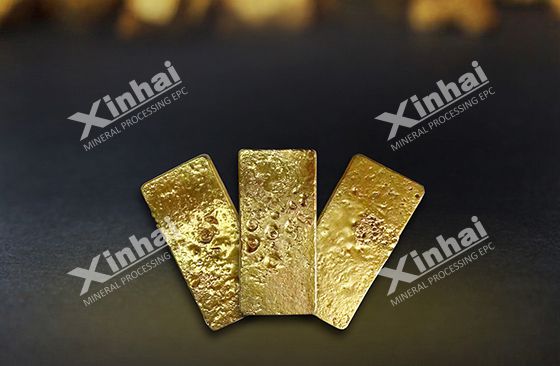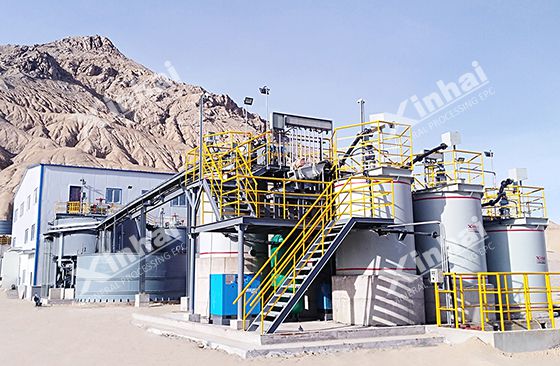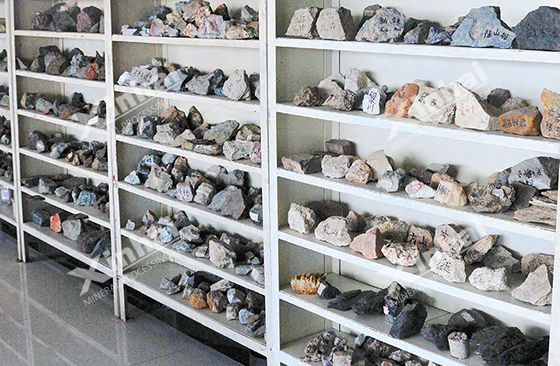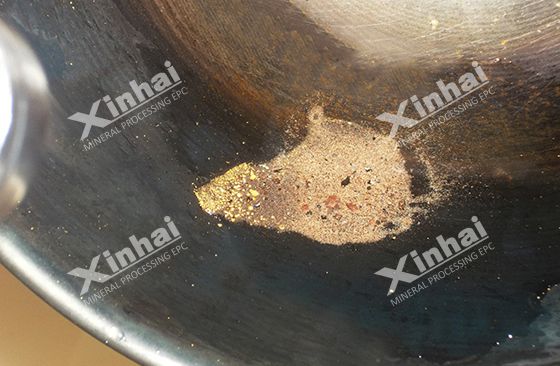
The cyanide leaching method is a common gold extraction method at home and abroad with the mature process, ideal technical and economic indicators.
In the process of gold cyanide leaching, the main factors affecting the gold leaching rate are cyanide and oxygen concentration, ore properties, gold particle size, pulp pH value, slime content, pulp concentration, leaching temperature, and leaching time.

Below, let’s see how each factor affects the gold cyanide leaching effect.
1. Cyanide and oxygen concentration
The gold leaching process is a common way to take gold out of ore, and gold cyanidation is the method most often used. One important point is the cyanide concentration in gold leaching, because it decides how well the gold dissolves and how much is recovered.
At present, the gold cyanide leaching concentrator often uses sodium cyanide as cyanide, its consumption depends on the material properties and operating factors, generally 20-200 times the theoretical amount. During the cyanide leaching of gold ore, the cyanide content is generally 0.03%-0.08%. The dissolution rate of gold increases linearly to the peak and then slowly increases with the increase of cyanide content. When the cyanide content reaches 0.15%, the dissolution rate of gold is independent of the cyanide content, even decreases (due to cyanide hydrolysis).

In the gold cyanide leaching process, the oxygen or other agents (such as H2O2, CaO2, Na2O2, KMnO4, and Cl2) can be used as oxidants, but most cyanide leaching concentrators choose to fill air now, the gold dissolution rate increases with the increase of oxygen concentration, so the dissolution of gold can be strengthened through the oxygen-rich solution or high-pressure aerated cyanide.
2. Pulp pH value
In practice, the pulp pH value must be kept between 10.0 and 11.0. The cyanide leaching rate of gold ore will decrease when the alkali number is too much and the pH value exceeds 12 or the alkali number is too low and the pH value is less than 9.
Because the hydrolysis reaction of cyanide will volatilize the toxic HCN, the lime can be added to weaken the hydrolysis of cyanide and reduce the chemical loss of cyanide. What’s more, the lime can also neutralize the acid substances and precipitate the harmful ions in the pulp, so that the dissolution of gold is in ideal conditions.
3. Ore properties
Some gold-bearing ores should not be treated by the cyanidation leaching method directly, because the higher content of copper, arsenic, antimony, bismuth and other components in the ores will greatly increase the consumption of cyanide or consume the oxygen in the pulp, and reduce the gold leaching rate. In addition, if the carbon content in the ore is high, the carbon will absorb the dissolved gold and then lose with the tailings. At this point, pre-oxidation roasting or flotation can be used to eliminate the influence of harmful impurities.

4. Gold particle size
The gold particle's size mainly affects cyanide time. The dissolution rate of coarse gold particles (>74um) is slow, so the gravity separation or flotation method is often used to recover the coarse gold particles in advance before gold cyanide leaching. In addition, the sufficient monomer dissociation of fine gold particles in the grinding process is also an important measure to improve the gold leaching rate.

5. Slime content
The contents of slime and pulp directly affect the diffusion rate of components during cyanidation. The slurry content should be less than 22%-25% when the slime content is high, but the content should not be too low, otherwise, the consumption of cyanide will be increased.

6. Pulp concentration
The diffusion rate of cyanide and oxygen in pulp is directly affected by the pulp concentration, too large a concentration is not conducive to gold cyanide leaching. The reasonable pulp concentration should be determined by a mineral processing test.
The high concentration leaching can be used, generally controlled at 40%-50% for the gold ore with less mud and impurities, while the low concentration leaching must be used for the gold ores with complex mineral composition and high mud content, usually about 25%.
7. Leaching temperature
The cyanide leaching of gold will be accelerated with the increase of temperature (caused by the increase of ion activity). But with the increase of temperature, the amount of dissolved oxygen decreases significantly, and the dissolved oxygen is zero at 100°C, making the leaching impossible. At the same time, the self-hydrolysis of cyanide increases, and the cyanide reaction of base metals speeds up, which increases the consumption of cyanide and decreases the solubility of Ca(OH)2, resulting in a low pulp pH value. Generally, cyanide leaching does not require heating, and the temperature can be maintained at 15-30°C.

8. Leaching time
The cyanidation leaching time depends on the material property, cyanidation mode, and cyanidation condition. Generally, the agitation cyanidation leaching is often more than 24h, sometimes as long as 40h, the cyanidation of gold telluride needs 72h, while the percolation cyanide leaching takes more than 5 days.
There are no same mines in the world, different ore conditions, and concentrator conditions, the suitable gold cyanide leaching method is different, and its technical parameters are different. It is suggested that a mineral processing test should be carried out first. The suitable conditions of the gold cyanide leaching process can be determined according to the test results, so as to obtain the ideal technical and economic indicators.
In summary, the main factors affecting the effectiveness of gold cyanidation leaching include cyanide concentration, oxygen content, pH value, ore properties, gold particle size, slime content, pulp concentration, leaching temperature, and leaching time. By rationally controlling these parameters, the gold leaching rate and reagent utilization efficiency can be effectively improved .
To facilitate a clear overview, the following table summarizes the key influencing factors.
| Factor | Key Effects and Recommendations |
|---|---|
| Cyanide Concentration | Controls dissolution rate; optimal 0.03%–0.08%. Excess causes waste. |
| Oxygen Concentration | Promotes dissolution; ensure good aeration or use oxidants. |
| Ore Properties | Cu, As, Sb, Bi, C increase reagent loss; pre-treat to remove impurities. |
| Gold Particle Size | Fine gold dissolves faster; grind to liberate gold grains. |
| Pulp pH Value | Keep at 10–11 to prevent HCN loss and stabilize CN⁻. |
| Slime Content | High slime slows diffusion; control within 22%–25%. |
| Pulp Concentration | Too thick limits diffusion; optimal 40–50% (low mud) or ~25% (high mud). |
| Leaching Temperature | Ideal 15–30°C; no heating required. |
| Leaching Time | Agitation 24–40h (up to 72h for tellurides); percolation >5 days. |
To find out more about our products and solutions, please fill out the form below and one of our experts will get back to you shortly.